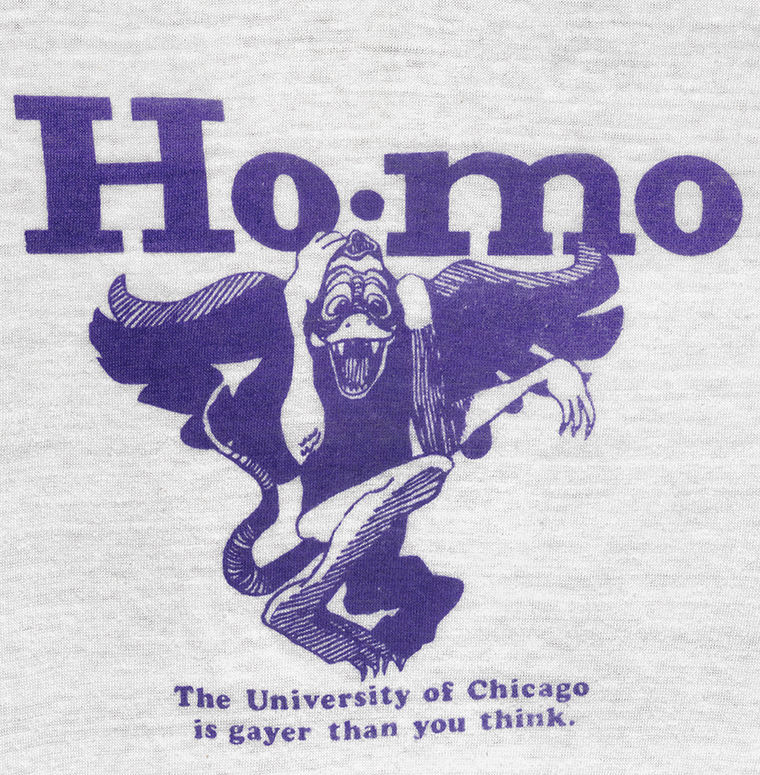Exhibit brings University of Chicago out of closet
Closeted/Out in the Quadrandles
April 6, 2015
The LGBTQ community of the University of Chicago—alumni, faculty and staff—collectively came out of the metaphorical closet to share the school’s long association with the struggle, activism and advocacy of its LGBTQ community.
“Closeted/Out in the Quadrangles,” an exhibition documenting the U of C’s long history with Chicago’s LGBTQ community, celebrated its opening with an April 1 gala at the Joseph Regenstein Library, 1100 E. 57th St. Headed by the Center for the Study of Gender and Sexuality’s Gina Olson and Lauren Stokes, the project features more than 95 oral histories gathered by current students from university alumni, faculty and staff dating back to the early 20th century. The exhibiton also includes archival documents, such as personal papers and photos from private donors, the Kinsey Institute, Northwestern University and Chicago’s Gerber/Hart Library and Archives.
Olson, who serves as the associate director of the CSGS, said the project proved to be a challenge because of the forced closeting and criminalization of the LGBTQ community during the early 20th century but yielded amazing discoveries.
“There are tremendous limitations on how to tell these histories when we’re not dealing with the same kind of identity formation as of [what] we’ve become accustomed to in the 21st century,” Olson said. “There were personal papers among some of the earliest female faculty that played a significant role at the university. Their papers were preserved and some of that is documentation of some of the various relationships that were had.”
Julia Gardner, the head of reader services in the Regenstein Library’s Special Collections Research Center, helped Stokes and her students perform their research for the project. Gardner said the project speaks to individual experiences on the campus that have now been strung together to tell a collective narrative documenting the university’s relationship with the LGBTQ community and the gay liberation movement.
“It’s a wonderful example of the collaboration that can happen between the library and other units and individuals on campus to enhance and expand the things that we are collecting and documenting [for] the campus history,” Gardner said. “People think, ‘Oh, who would be interested in my experience as an undergraduate?’ and one thing this exhibit does very nicely is show that it is an ongoing thing, and of course, we are always interested [in] any aspect of campus history and student experiences.”
Gardner said libraries have what they refer to as “hidden collections”—archives of documents and events of the past that go unnoticed.
“They weren’t hidden, they’ve always been here,” Gardner said. “It took a lot of digging to highlight these things they’re trying to document, especially in the early years of the university. There was no Center for the Study of Gender and Sexuality in pre-1920, but nonetheless people were working with gay and lesbian communities, and there definitely were LGBTQ people on the campus as faculty and students.”
Stokes, who also served as the exhibition’s curator, said she and the students working on the project discovered details about life and events on campus that had gone undocumented and could have been forgotten if they remained untold.
“One of [the participants] told us that one time in response to administrative homophobia, he and his friends decided that they were going to hang a big banner saying, ‘Encourage homosexuality,’ from the roof of Harper Library,” Stokes said. “No picture of that banner exists. It was up and it was [taken] down pretty quickly, but that’s such a great moment and that would have been lost forever.”
The progression of LGBTQ members’ acceptance at the university was in large part the result of students striving to make better lives for themselves on their own campus. Olson said one of the more fascinating aspects of working on the project was finding out who the courageous students were that led the charge for gay rights on campus.
“Student organizing was really the seed for these larger movements,” Olson said. “It has been really interesting to see what happened to make these larger events happen … because people make change, and so who were the people and how did they do it?”
One such student organization, the Chicago Gay Liberation Movement, which helped to further the movement in America, was started on the university’s campus. It originated when a gay student posted an ad requesting a gay roommate, according to Stokes.
“[The ad] said, ‘Gay student wanted for room,’” Stokes said. “He was gay and he wanted to share his apartment with another gay person, and it’s from that apartment that they started to have meetings, and it’s from those meetings that things started to get bigger.”
Stokes said the purpose of the project is to continue the fight for members of the LGBTQ community who are still discriminated against daily.
“Things have come a really long way, and it’s important to pay homage to that, but trans students are still struggling to have a place that is totally safe for them, sexual assault is an issue on campus, and that’s also a queer issue,” Stokes said. “The history of struggle in the past, I hope, will inspire future efforts for change.”








